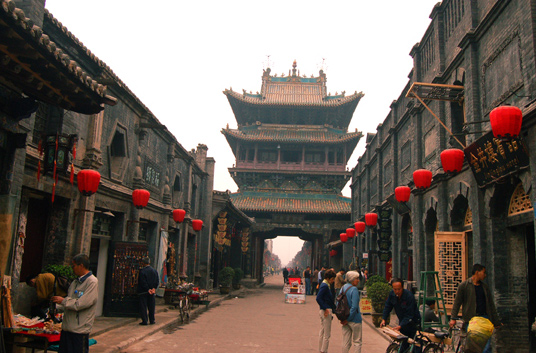An ancient city grapples with modern challenges
|
|
| The ancient city of Pingyao |
The Ancient City of Pingyao has endured for 2,700 years and can boast that it remains nearly identical to its appearance during the Ming (1368-1644) and Qing (1644-1911) dynasties. As one of the best-preserved ancient cities in China, it attracts many tourists from home and abroad each year. Yet the demands of preserving that rich history have the town facing a paradoxical dilemma -- in order to preserve the town it must force thousands of its residents to relocate, and this process has the town confronting unprecedented challenges.
The good news arrived in 1997 -- UNESCO placed Pingyao on its World Heritage List. Then the bad news -- if you lived in the city there was a good chance you'd be asked to find a new place to live, as the city government announced that half its population should move out by 2005 for the protection of the town. Thirteen years later, however, only 15,000 residents have moved out, which has left 35,000 residents still in the city -- 20,000 is the presumed maximum capacity, and what's more troubling for city administrators is that recently the population has been increasing.
Handyman Zhang Yumin, 47, mounts his shabby, creaking tricycle each morning and sets out to earn money to support his family. The tricycle clanks and rattles as it labors over the stone streets.
Zhang and his family live in a tiny 15-square-meter room with a bed occupying nearly half of it. Shelves, wardrobes, kitchenware, a stove and a second-hand TV leave little room for maneuver. There's no heating system in the town, so they have to burn coal and firewood in winter. Before his son headed to college, Zhang, his wife and son slept on the same bed while their daughter had to live with her grandmother.
"I can earn as much as 1,500 yuan ($225.37) a month, which barely supports the whole family," Zhang said with a sigh. He gives his son 800-900 yuan ($120.2-135.22) every month for his living expenses and pays his daughter's 2,500-yuan ($375.61) tuition each semester.
Zhang's circumstances are not rare in Pingyao. Life outside the ancient town offers more conveniences, with hospitals, schools and public buses, but leaving is extremely difficult. Like Zhang, most residents have low-income jobs and are barely making ends meet. With limited subsidies available, they cannot afford housings in the new area, which cost from 2,000 to 3,000 yuan ($300.49-450.74) per square meter.
Yin Baobao, an official from the Pingyao Administration of Cultural Heritage, emphasized the pressures in attempting to balance cultural preservation with a large population.
"It is like sitting on the top of a volcano every day," Yin said.
A staff member from Pingyao Administration Committee said the water and electricity facilities were all constructed in the 1960s. As tourism boomed in recent years, these facilities and infrastructure no longer meet today's needs. If the city can't move more residents out expeditiously, the town will die -- forget any new development, the staff member added.
A large population causes many significant problems for a historic town, said Liu Jianchang, vice director of the Pingyao Tourism Bureau.
"Most of the houses in the town are made of wood, so if there's a fire, the whole town will burn down. Some residents set up street stalls without a license; bicycles, cars, motorcycles and battery vehicles congest the crowded town streets even further. Tourists don't come to see this," Liu said.
However, the relocation process has proved exorbitantly expensive. The city requires more than 2 billion yuan ($300.49 million) for the new city being built for relocated residents, and also reconstructing Pingyao. Yet the city's annual revenue last year was only 730 million yuan ($109.68 million), which is far from sufficient.
Administrators say great efforts have been made to relocate residents. The city government plans to invest 700 million yuan ($105.17 million) to relocate 15,000 more people.
"We have spent 100 million yuan ($15.02 million) in the past two years. Now we have a new loan of 600 million yuan ($90.15 million) from the Export-Import Bank of China for the construction of the new city and the protection of the cultural relics for the next three years," Liu said in a released statement.
"Part of the funds will be used for the maintenance and repair of old buildings, some of which will be turned into nice hotels to accommodate the increasing numbers of tourists from all over the world," he added.
To make up for the shortage of funds, the city has increased the admission fee to Pingyao many times, and the new increase, from 100 yuan ($15.02) to 125 yuan ($18.78), will take effect next March. Nevertheless, the income it generates remains far short of the city's needs.
 0
0 








Go to Forum >>0 Comments